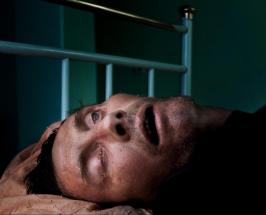Ukrainian drug addicts dying due to treatment ban, says UN

Harm Reduction
AIDS Research Articles and News
Overdose Prevention
Drug War
Drug Policy Reform
Addiction Treatment Articles
Methadone Maintenance
Suboxone Treatment
Overview
Originally Published: 01/20/2015
Post Date: 01/23/2015
Source Publication: Click here
Similar Articles: See the similar article
Summary/Abstract
As many as 100 drug users in Crimea may have died since the peninsula was annexed by Russia, according to a top UN official, due to fact that the “substitution therapy” they were receiving from Ukrainian authorities being illegal under Russian law.
Of 800 Crimean users who were on programs using methadone or Buprenorphine, experts believe at least 10% have died, according to Michel Kazatchkine, the UN’s special envoy for HIV/Aids in the region. Reliable data from Russian authorities is hard to come by, but local rights activists believe the 10% figure is a conservative estimate. The deaths are “mostly overdoses or suicide” said Kazatchkine.
Content
The idea behind the programs is to provide those addicted to heroin or other opiates with a safe way to take drugs, which does not involve injecting and thus reducing the risk of transmitting HIV and other diseases. It also decriminalizes drug users, giving them the chance to begin a normal life. Legal in most countries, Ukraine has scaled up programs using the drugs methadone and Buprenorphine, since pilot projects began in 2005.
At the start of last year, there were about 8,700 Ukrainians on substitution therapy, including some 800 in Crimea, says Pavlo Skala of the HIV Alliance in Kiev. However, substitution therapy is strictly illegal in Russia, where authorities say it does not work.
Instead, Russia uses “cold-turkey” detoxification programs, and authorities moved quickly to shut down Crimea’s drug programs within a few weeks of annexing the territory last spring.
Ruslan Zhitomirsky, a 30-year-old from Simferopol in Crimea, who has been on substitution therapy for two years, said the decision to start the treatment changed his life: “I started a job in a supermarket, started talking to my family again, and even got a girlfriend. I realized how much pain I had caused my family in the years before. For the first time, I felt like I was living a normal life.”
After the annexation, Zhitormirsky decided he would relocate to Kiev in order to keep taking the medication. He returned to Crimea last week for a three-day trip to see his family, and was depressed by the state of his old drug-using friends. Most of them had not wanted to move to Ukraine like him: either they did not want to leave their lives and families in Crimea, or “were scared that they would be shot by fascists in Ukraine”, having watched Russian state television. Instead, they have been slowly dying in Russian Crimea.
“I know three people who went to Russian ‘detox’ centers and died, and some others who died in Simferopol,” says Ruslan. “The ones who are still alive have started injecting all kinds of filth, anything they can get their hands. I have never seen people look so ill.”
After the annexation of Crimea in March last year, the territory was given a grace period until at least the end of the year, when Ukrainian laws could function alongside Russian ones. Substitution therapy could have been phased out gradually as the year went on, or it could even have been used as a pilot project to test Russia’s hardline stance on methadone and see if it could work in the Russian context.
Instead, the order came that all substitution therapy programs had to be completely halted within four weeks, even though coming off methadone safely takes several months. Doctors who prescribed the drugs after that period could go to prison for drug dealing.
“This is discontinuing a treatment recommended by the World Health Organization and UNAids; a standard international treatment that is evidence based,” says Kazatchkine. “People had to go abruptly from a state of physical, psychological and social stability in their lives to going back to the hell of street drugs, in a particularly difficult context.”
The head of Russia’s drug control agency, Viktor Ivanov, has claimed that the death rate among drug users in Ukraine is twice that in Russia, and dismissed the idea of substitution therapy out of hand. Russian drugs authorities even carried out the televised burning of tens of thousands of methadone doses seized from Crimean clinics.
“The death rates among people using substitution therapy were 10 times higher than the rates among those not doing so. Effectively, Ukraine was running a system to physically annihilate drug users,” Ivanov claimed during an anti-drugs meeting that took place in Crimea last July. Ivanov also said that 90% of the methadone bought by the Ukrainian state to use in the programs found its way onto the street and was sold.
“It’s bullshit,” says Skala of the HIV Alliance in Kiev. “They were saying all this even before the programs were implemented a decade ago, and they are saying it still now. We’ve given up even trying to argue with them.”
Ukrainian activists are now turning their attention to the east of the country, where patients receiving substitution therapy in areas currently controlled by pro-Russian rebels risk losing access to medication after Kiev authorities imposed a blockade on the region.
Around 550 patients risk being cut off from medication. Activists are appealing to Ukrainian authorities to ensure drugs get through to avoid a repeat of the Crimean scenario.





